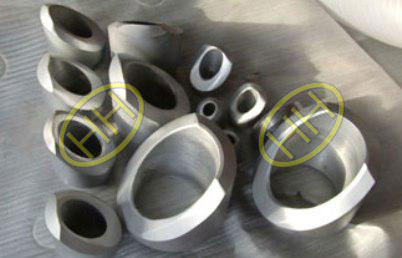Open die forging is an important technique for many types of forging manufacturing. It allows rough and finishing shaping of metal, most commonly steel and steel alloys. It takes heated metal and compresses it between two dies. The metal is worked at temperatures ranging from 500°F to 2400°F and is shaped into the desired shape through hammering or pressing. Most of these forgings or made on flat dies, but V-dies, round swaging dies, pins, mandrels, and loose tools are also used depending on the specific part.It requires a die that is open on the sides, allowing the workpiece to move freely, in a lateral direction, when struck. This type of design also allows for forging of very large workpieces, in some cases, weighing many tons and having great length and width. Some open die forges can accommodate pieces weighing as much as 150 American tons (136 metric tons) and 80 or more feet (24.4 m) in length.
Open die forgings can be worked into shapes which include discs, hubs, blocks, shafts (including step shafts or with flanges), sleeves, cylinders, flats, hexes, rounds, plate, and some custom shapes.
-

latrolet(lateral outlet)
This method is very similar to the closed die forging process. However, open die forging is unique because the shape of the piece does not result from the shape of the dies used, but from repeated local forming with geometrically simple dies that are typically moved relative to the piece. This forging process gets it’s name because the metal is never completely confined in the dies.
Open die forgings produce strong, durable parts in sizes that range from a few pounds to hundreds of tons. As a result, it is a favorable method to produce large and simple parts such as bars, rings, blanks, hollows, and spindles. Open die forging is also a great open for custom metal components as well.
Open-die forging lends itself to short runs and is appropriate for art smithing and custom work. In some cases, open-die forging may be employed to rough-shape ingots to prepare them for subsequent operations. Open-die forging may also orient the grain to increase strength in the required direction.
The process of open die forging serves many purposes, besides simply shaping the metal. Forging of the metal aligns and refines the grain of the metal, which increases strength as well as reducing porosity, which is the presence of any air bubbles, even those too small to be seen with the naked eye. It also improves the ability of the metal to respond to machining. Forged metal parts have improved wear resistance and other mechanical properties over similar machined or cast parts.
Advantages of Open-Die Forging
- Reduced chance of voids
- Better fatigue resistance
- Improved microstructure
- Continuous grain flow
- Finer grain size
- Greater strength
Cogging is successive deformation of a bar along its length using an open-die drop forge. It is commonly used to work a piece of raw material to the proper thickness. Once the proper thickness is achieved the proper width is achieved via edging.Edging is the process of concentrating material using a concave shaped open die. The process is called edging because it is usually carried out on the ends of the workpiece. Fulleringis a similar process that thins out sections of the forging using a convex shaped die. These processes prepare the workpieces for further forging processes.
Advanced open die forging techniques are capable of producing complex shapes even in large parts and products in addition to simpler shapes like bars, ingots, and rounds. While steel and related alloys are the most common subjects for open die forging, other metals can be shaped this way as well, including copper, nickel, and titanium alloys. The main drawback of open die forging is that the workpiece must be constantly moved as it is worked, requiring complex mechanical controls or skilled human operators, whereas closed die forging can be entirely automated and is a much simpler process.
- Rolled Rings
- Mandrel Rings
- Shafting & Bars
- Discs
- Crane Hooks
- Step Shafts







